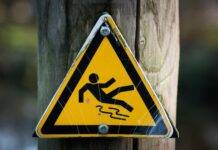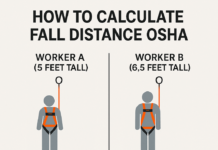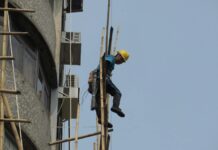
OSHA Handrail Requirements for Platforms
Safety regulations enforced by the Occupational Safety and Health Administration (OSHA) play a pivotal role in ensuring workplace safety, particularly concerning platforms and their handrail requirements. Understanding these requirements is crucial to maintaining a safe environment for workers and preventing accidents.
Introduction to OSHA Handrail Requirements
When it comes to platforms, OSHA has specific guidelines for handrails to prevent falls and ensure overall safety. Handrails are essential components that provide stability, support, and guidance to individuals using elevated platforms. The guidelines set by OSHA aim to minimize risks and create a secure working environment.
Importance of Handrails for Platforms
Handrails on platforms serve as a crucial safety measure, reducing the risk of falls and offering support for those working at heights. They act as barriers, preventing individuals from accidentally slipping or losing balance. Compliance with OSHA’s handrail requirements is imperative to maintain a safe workplace and prevent potentially hazardous situations.
OSHA Regulations and Standards
General Requirements for Handrails
OSHA mandates specific criteria for handrails, including their height, load-bearing capacity, and design specifications. Handrails must be of adequate strength and be capable of withstanding reasonable loads without failing.
Materials and Construction Guidelines
Approved materials for handrails must exhibit durability and resistance to environmental factors. The construction process should adhere strictly to OSHA standards to ensure reliability and longevity.
Occupational Safety and Health Administration (OSHA) has specific requirements for handrails on platforms to ensure safety in the workplace. Here are some general guidelines:- Height: Handrails must be 42 inches, plus or minus 3 inches, above the walking surface of the platform.
- Strength and Construction: Handrails should be able to withstand a force of at least 200 pounds applied in any direction at any point along the top of the rail.
- Spacing: Openings in the handrail must not allow the passage of a sphere 4 inches in diameter or greater. This prevents objects or individuals from slipping through or getting stuck.
- Extension: Handrails must extend horizontally at least 12 inches beyond the top and bottom of the flight of stairs or the ramp run.
- Continuous and Secure: Handrails should be continuous along the entire length of the stairs or ramp and securely fastened to the platform structure.
These guidelines are meant to ensure the safety of individuals using platforms in various workplaces. Always consult the specific OSHA guidelines and regulations applicable to your industry and location, as they might have additional or slightly different requirements.Specific Platform Requirements
Different platforms may have distinct requirements according to their usage and location. OSHA tailors regulations to suit various settings, ensuring the right safety measures are in place for specific platform types.
Handrail Inspections and Compliance
Regular inspections are necessary to ensure handrails remain compliant with OSHA standards. Organizations must conduct periodic checks and promptly address any issues or deviations to maintain a safe working environment.
Common Violations and Consequences
Failure to comply with OSHA handrail requirements can result in severe consequences, including penalties and potential legal actions. Understanding and adhering to these regulations is crucial to avoid penalties and ensure workplace safety.
Training and Awareness for Handrail Safety
Educating employees about the significance of handrails and conducting training sessions on their proper use are essential steps toward ensuring compliance and preventing accidents.
Benefits of Compliance with OSHA Standards
Adhering to OSHA standards not only ensures safety but also boosts productivity and employee morale, fostering a culture of safety within the organization.
Case Studies Illustrating Non-Compliance Issues
Real-life instances highlighting the repercussions of non-compliance with OSHA handrail requirements underscore the importance of adherence to these regulations.
Innovations in Handrail Design for Enhanced Safety
Advancements in handrail design offer improved safety features, providing additional protection and functionality beyond basic compliance.
Conclusion: Ensuring Safe Platforms with OSHA Standards
In conclusion, complying with OSHA handrail requirements is essential for maintaining a safe work environment on platforms. Understanding and implementing these guidelines not only prevent accidents but also contribute to a culture of safety within organizations.
OSHA Fall Protection Requirements
OSHA Anchor Point Requirements
Full Body Harness 100% Tie Off
FAQs about OSHA Handrail Requirements
- What are the minimum height requirements for handrails on platforms? The minimum height requirement for handrails on platforms, according to OSHA standards, is 42 inches.
- Are there specific materials mandated by OSHA for handrail construction? OSHA doesn’t prescribe specific materials but requires handrails to be constructed from materials that are sturdy and capable of withstanding reasonable loads.
- How often should handrails be inspected to ensure compliance? Handrails should undergo regular inspections as per OSHA guidelines. A common practice is to inspect them annually, but frequencies might vary depending on the usage and environmental factors.
- What penalties can companies face for non-compliance with OSHA handrail regulations? Non-compliance with OSHA regulations regarding handrails can lead to penalties, fines, or even legal actions against the company. The severity of penalties might vary based on the violation and its impact.
- Are there any exemptions for certain types of platforms from these requirements? OSHA regulations might have exemptions for specific types of platforms based on their nature and usage. However, these exemptions are specific and should be verified according to the platform’s characteristics and location.
























